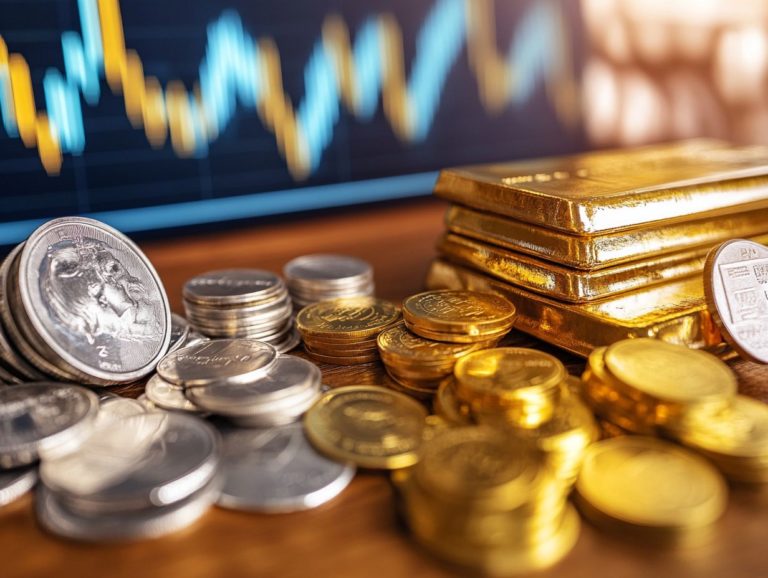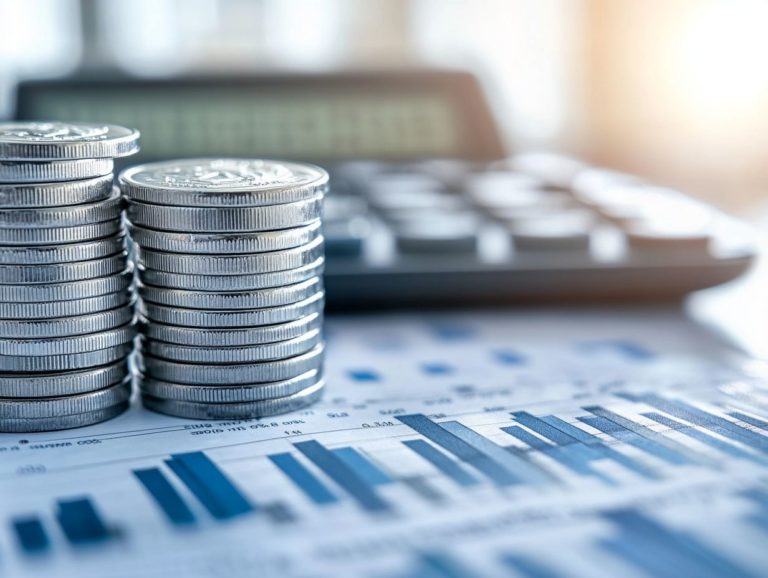Investing in Precious Metals for Retirement
Investing in precious metals can be a savvy strategy for securing your retirement. These physical assets are celebrated for their stability and provide an effective hedge against inflation and market volatility.
Explore the advantages of adding gold, silver, platinum, and palladium to your investment portfolio. Delve into the process of getting started, from selecting the right broker to understanding your options for storage and insurance.
Navigating the realm of precious metals could significantly enhance your financial future.
Contents
- Key Takeaways:
- Benefits of Investing in Precious Metals for Retirement
- Types of Precious Metals to Invest In
- How to Get Started with Precious Metals Investing
- Managing and Protecting Your Precious Metals Investments
- Frequently Asked Questions
- What are some reasons for investing in precious metals for retirement?
- What are the different ways to invest in precious metals for retirement?
- What are some potential risks of investing in precious metals for retirement?
- How can investing in precious metals help diversify my retirement portfolio?
- Are there any tax implications for investing in precious metals for retirement?
- What are some tips for successfully investing in precious metals for retirement?
Key Takeaways:
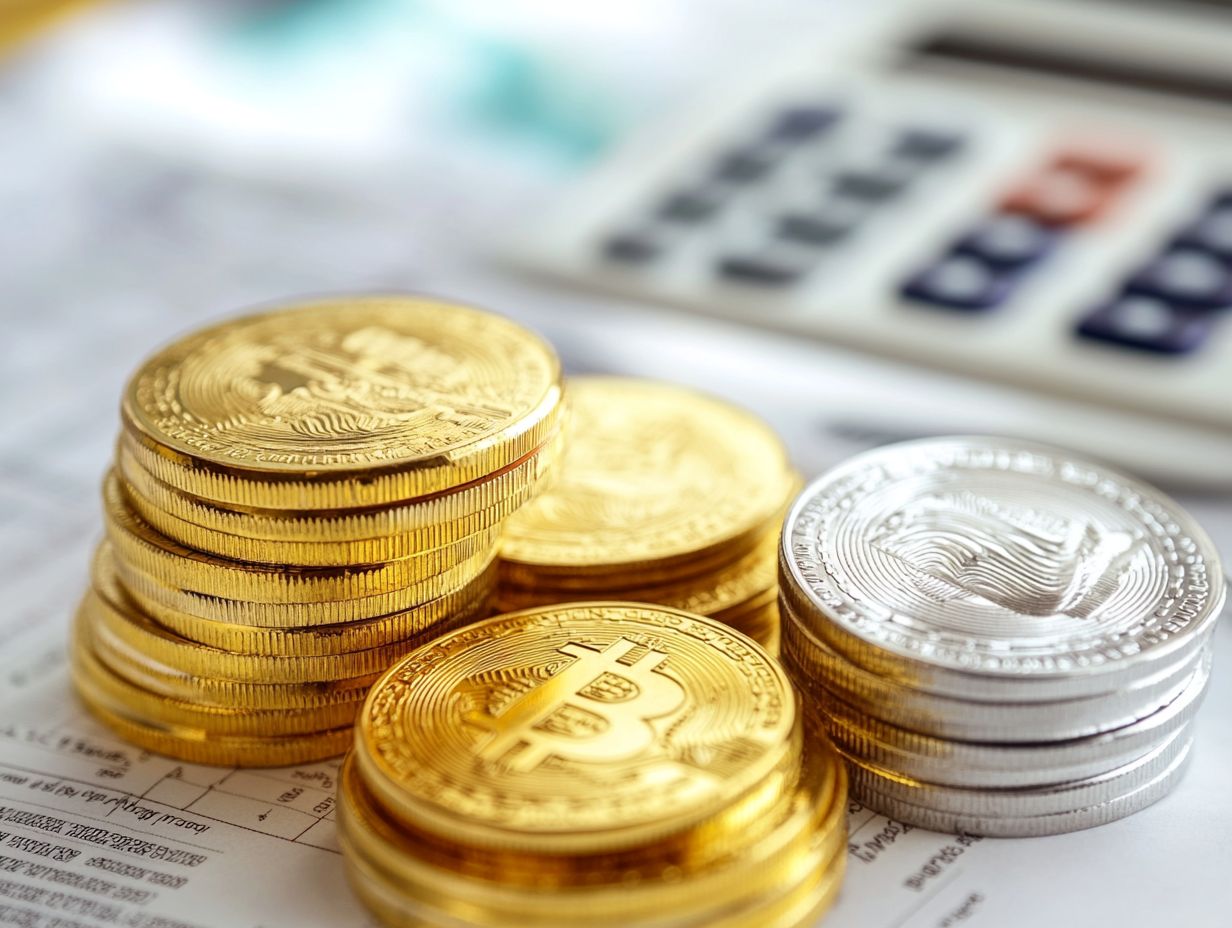
- Diversify your portfolio with gold, silver, platinum, and palladium.
- Protect against inflation and market volatility.
- Research brokers for their reputation and fees.
- Consult a financial advisor before investing.
- Monitor market trends and adjust as needed.
- Consider storage options and insurance.
What are Precious Metals?
Precious metals like gold, silver, and platinum are not just shiny objects; they are valuable commodities celebrated for their distinctive physical and chemical properties.
These characteristics make them ideal for a range of applications, from exquisite jewelry to vital industrial uses and reliable investment vehicles.
Many investors are turning to precious metals for security and growth, viewing these assets as a safeguard against market volatility and inflation. This approach helps preserve wealth over time.
Historically, these metals have boasted intrinsic value, acting as currency and a store of wealth since the dawn of civilization. Their inherent scarcity and consistent demand have cemented their status in the financial arena, especially during economic downturns when traditional investments may struggle.
Investors often look to precious metals not just for diversification but also for the potential capital appreciation they can provide, particularly in uncertain times. As global economies fluctuate and geopolitical tensions escalate, the allure of precious metals intensifies, enabling individuals to protect their assets while potentially enjoying long-term returns.
Benefits of Investing in Precious Metals for Retirement
Investing in precious metals for retirement provides a wealth of advantages, including improved financial stability, a hedge against inflation, and a diversified investment portfolio.
Given the unpredictable nature of traditional stock markets, adding assets like gold and silver to your Individual Retirement Account (IRA) can serve as a safeguard for your wealth during times of economic uncertainty and market turmoil.
Diversification and Protection Against Inflation
Diversifying through investments in precious metals is a crucial strategy for safeguarding your assets against inflation and market volatility. By incorporating gold, silver, and even platinum into your investment portfolio, you can protect your wealth from the adverse effects of economic downturns and unpredictable market shifts.
This approach not only minimizes your risk but also stabilizes your returns over time. Precious metals have historically shown a negative correlation with stocks and bonds during periods of economic uncertainty; this means they often rise in value when those investments decline.
For instance, during the 2008 financial crisis, gold prices soared by over 25%, providing a safe haven for investors. Experts typically recommend allocating 5-10% of your portfolio to precious metals, underscoring their importance as a hedge against inflation, which has been on the rise in recent years.
As currencies fluctuate and geopolitical tensions mount, having a portion of your investments in tangible assets offers a sense of security and strengthens your overall financial strategy.
Types of Precious Metals to Invest In
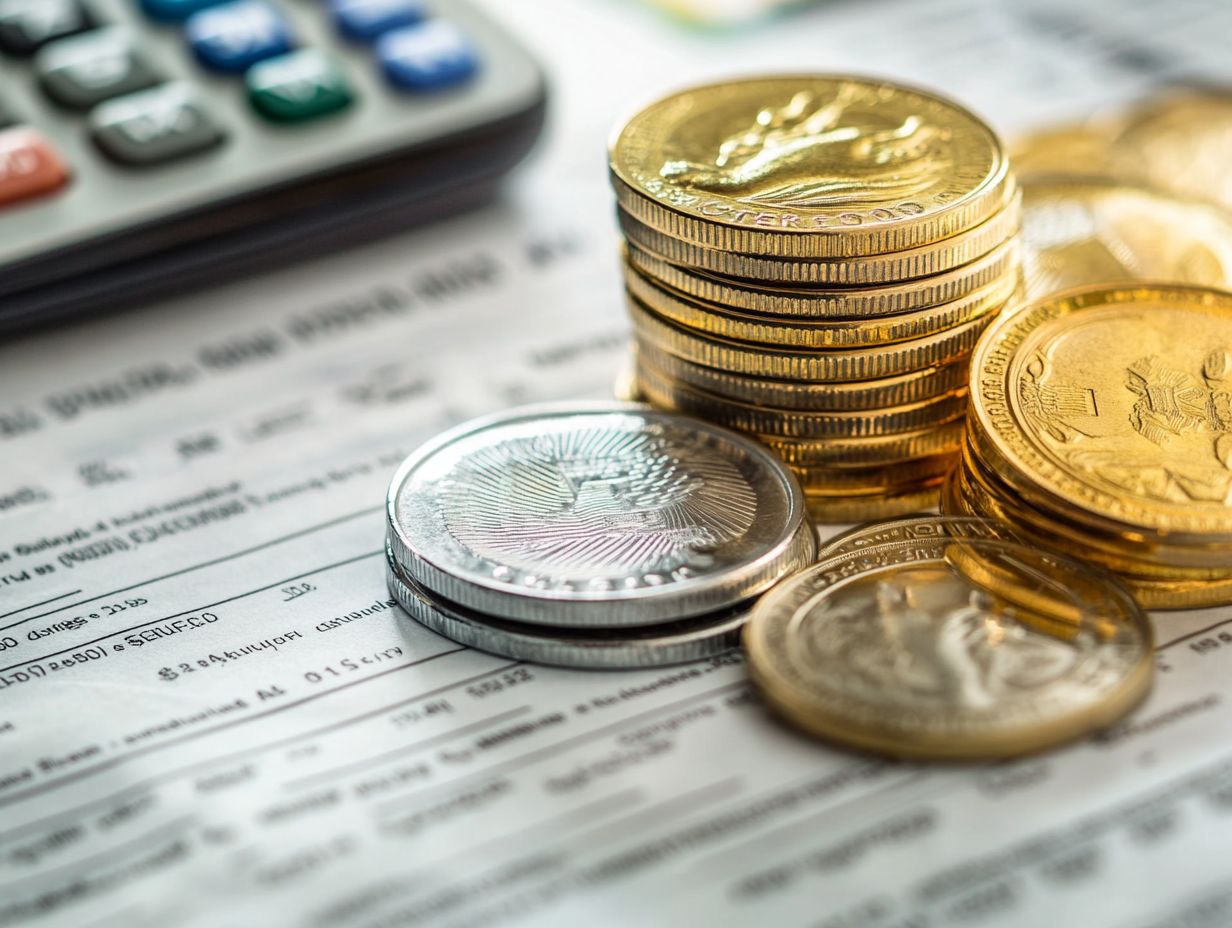
When you think about investing in precious metals, you’ll find a variety of options to explore, such as gold, silver, platinum, and palladium.
Each of these metals has its own distinct characteristics and market dynamics, providing unique advantages and potential returns. This diversity can be invaluable as you aim to enhance your portfolio and safeguard your wealth.
Gold, Silver, Platinum, and Palladium
Gold, silver, platinum, and palladium are the four primary precious metals you should consider for diversification and wealth preservation. Each offers unique investment opportunities influenced by market conditions and your individual financial goals.
Gold remains the most popular choice, celebrated for its historical status as a safe-haven asset. On the other hand, silver often attracts attention for its affordability and practical industrial applications.
Platinum stands out as a luxury asset, appealing to specific market segments thanks to its use in automotive catalytic converters and fine jewelry. Meanwhile, palladium has recently surged in popularity, driven by its critical role in reducing vehicle emissions. This makes it a sought-after commodity in the face of evolving environmental regulations.
As you analyze these metals, it’s essential to evaluate factors like liquidity, which can vary significantly between them. Demand trends also influence pricing. Returns can fluctuate dramatically due to market dynamics and geopolitical factors. This highlights the importance of incorporating these assets into a well-rounded investment strategy.
How to Get Started with Precious Metals Investing
Embarking on your journey into precious metal investing entails several essential steps.
- First, you’ll want to understand how the market works, ensuring you re well-informed about the factors that drive prices.
- Next, selecting the right broker or dealer is crucial; this choice can greatly affect your experience and success.
- As you define your investment strategy, it s wise to conduct thorough research and seek professional advice.
- Whether you opt to purchase physical metals, invest in Exchange Traded Funds (ETFs), or set up a retirement account for precious metals, effectively navigating your options will enable you to make informed decisions and optimize your investment outcomes.
Tips for Choosing a Broker or Dealer
Choosing the right broker or dealer for your precious metals investments can greatly affect your financial decisions and potential returns. Look for reputable companies that provide competitive fees, transparent pricing, and a diverse range of purchasing options whether you’re interested in direct sales or investing through an IRA.
As you make this decision, take the time to examine the broker s credentials and track record in the industry. Reading comprehensive reviews from past clients will help you assess their reliability and service offerings.
Some firms may offer educational resources or personalized advice that can be particularly beneficial if you re new to the precious metals market. Understanding the fee structure is crucial hidden charges can swiftly erode your profits, making it imperative to choose a business that emphasizes transparency.
By carefully considering these factors, you can establish a partnership that not only protects your assets but also enhances your investment strategy.
Factors to Consider Before Investing
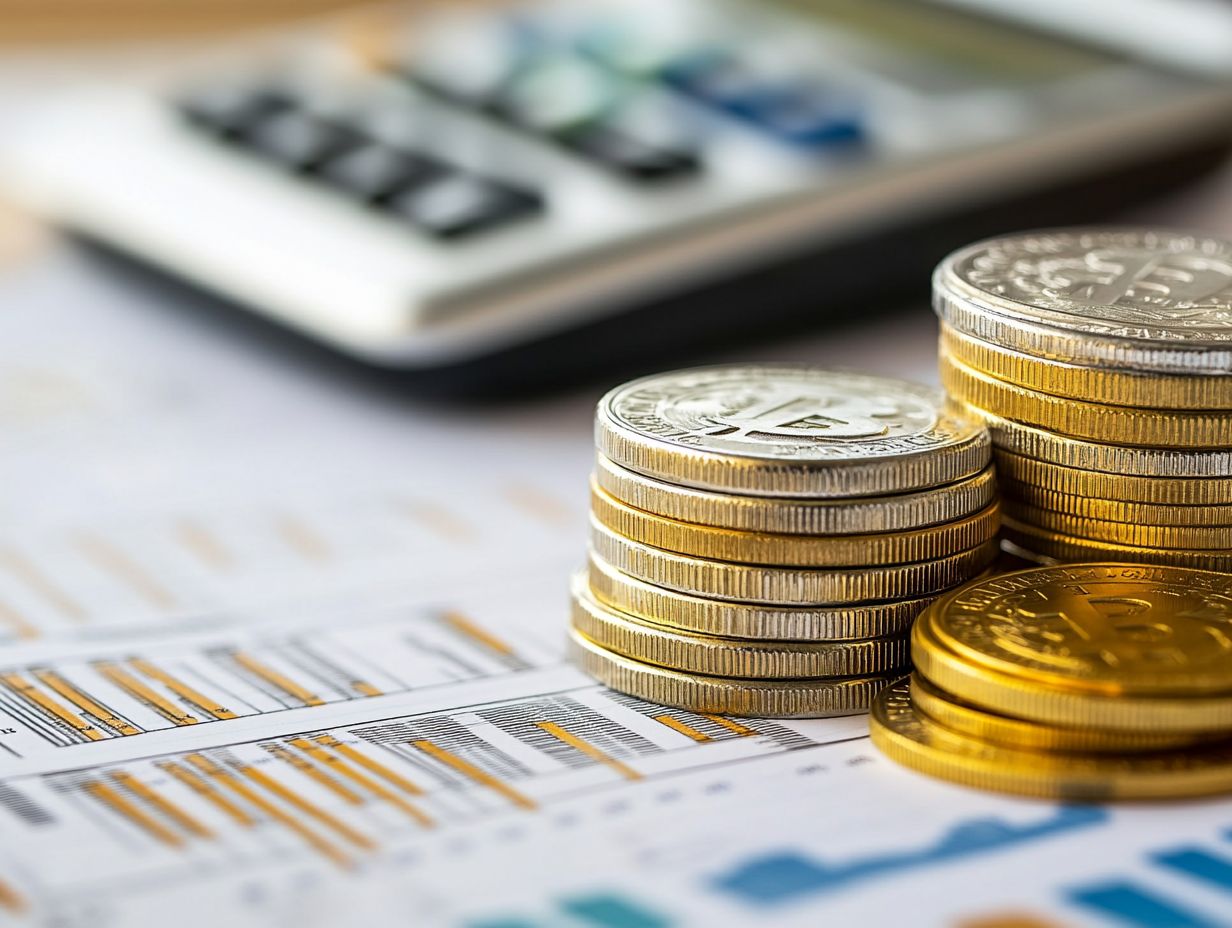
Before you dive into investing in precious metals, you need to consider several exciting factors that can boost your investment success!
Consider market volatility, historical performance, and the unique risks tied to each metal all of which deserve your careful attention to craft a well-informed investment strategy.
Understanding the nuances of risk assessment is crucial, as it allows you to determine how much fluctuation you can comfortably manage. Watch geopolitical developments and inflation rates, as these often play a significant role in shaping pricing trends.
Engaging in thorough market analysis will arm you with valuable insights into demand and supply chain dynamics that can affect metal values.
It s important that your personal financial goals align with these insights. Whether you re targeting long-term growth or short-term gains, customizing your investment approach to meet your objectives is key.
For example, examining a case study on a silver miner’s stock might reveal impressive gains when global supply tightened. This emphasizes the importance of strategic investment planning.
Managing and Protecting Your Precious Metals Investments
Effectively managing and safeguarding your precious metals investments is crucial for maximizing their value and securing long-term financial stability.
You should consider developing a comprehensive strategy that encompasses secure storage solutions, enough insurance, and ongoing monitoring of market trends. This proactive approach will enable you to make informed decisions that enhance the performance of your investments.
Storage Options and Insurance
When investing in precious metals, selecting the right storage options and obtaining insurance are crucial steps in safeguarding your investments.
You have a variety of choices, ranging from personal storage at home to professional vault services. Each provides different levels of security and accessibility.
Home storage may be convenient, offering immediate access, but it also exposes you to risks like theft or damage. On the other hand, using banks or special vault services typically brings enhanced security measures, including monitoring and climate control.
Remember, these options often have annual fees that can accumulate over time.
Securing insurance specifically tailored for precious metal investments is essential; it protects against potential losses and grants you peace of mind.
Knowing the benefits and drawbacks of these storage methods empowers you to make better choices that align with your financial strategies and risk tolerance.
Monitoring Market Trends and Making Adjustments
Monitoring market trends is essential for you as an investor in precious metals. It enables you to make informed adjustments to your portfolio as economic conditions shift.
By staying attuned to market fluctuations and global economic indicators, you can optimize your strategies and safeguard your investments. This practice helps you identify risks and unveils opportunities from supply and demand changes, geopolitical tensions, or currency fluctuations.
Recognizing key indicators like inflation rates, interest rate movements, and investment trends is vital for accurate market analysis. It s also important for you to keep an eye on central bank policies and mining production reports, as these can significantly influence precious metal prices.
By regularly reassessing these trends and indicators, you can adeptly adjust your investment strategy, ensuring that your portfolio remains resilient in an ever-evolving financial landscape.
Frequently Asked Questions
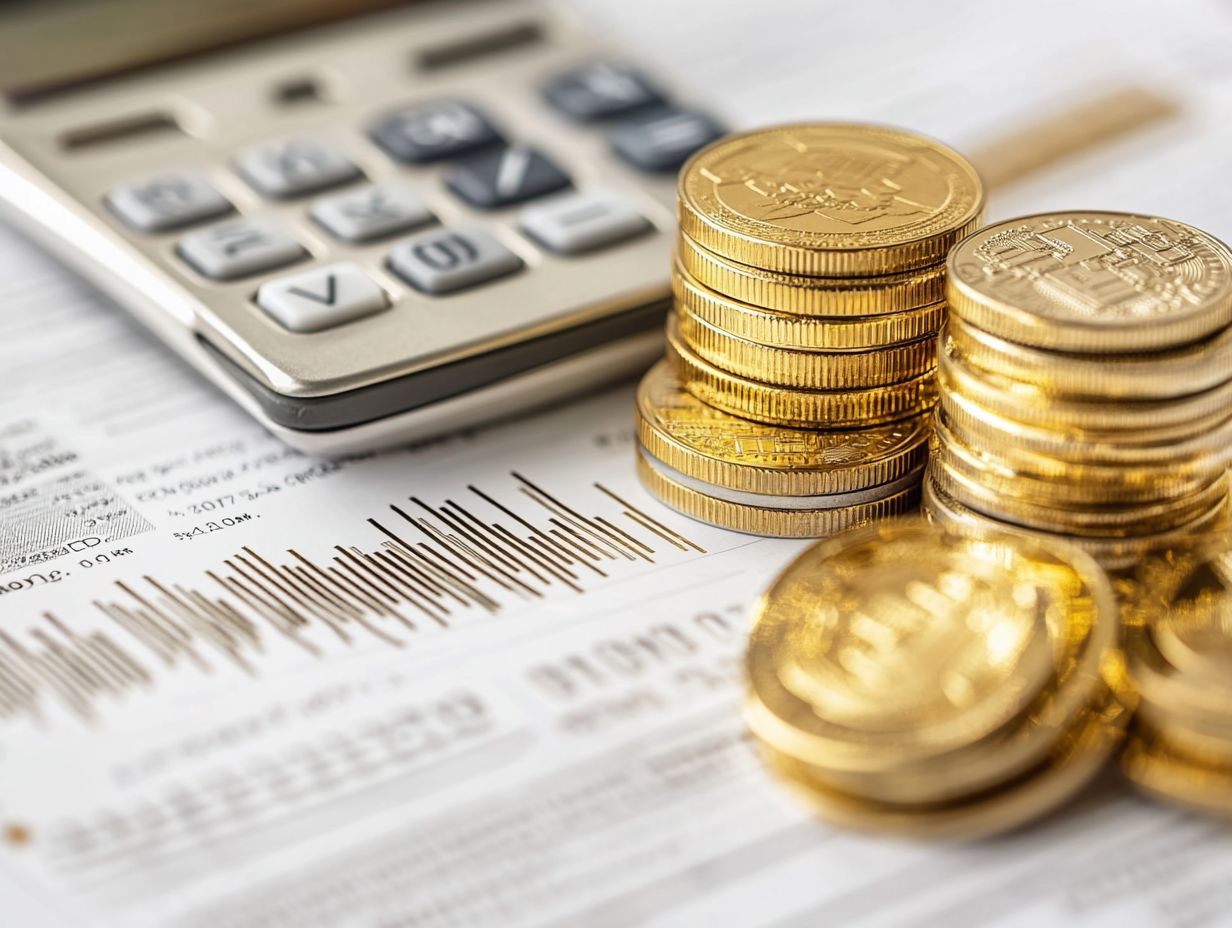
What are some reasons for investing in precious metals for retirement?
Investing in precious metals, such as gold, silver, and platinum, can offer a hedge against inflation and economic uncertainty. To make informed decisions, it’s essential to understand what criteria to use for precious metals investment. These metals also tend to hold their value over time, making them a potentially stable and reliable investment for your retirement portfolio.
What are the different ways to invest in precious metals for retirement?
There are a few options for investing in precious metals for retirement. You can purchase physical metals, such as bullion or coins, through a reputable dealer. You can also invest in precious metal ETFs or mutual funds, which offer exposure to the metals market without physically owning the metals.
What are some potential risks of investing in precious metals for retirement?
As with any investment, there are risks associated with investing in precious metals for retirement. These include market volatility, storage and insurance costs for physical metals, and the potential for scams or fraudulent dealers. To mitigate these risks, make sure you do your research on top precious metals to invest in—your financial future depends on it!
How can investing in precious metals help diversify my retirement portfolio?
Diversification is key to a well-rounded retirement portfolio, as it helps minimize risk and potential losses. By including precious metals in your portfolio, you are adding a different asset class that may perform differently than stocks or bonds, which can help balance out your overall portfolio.
Are there any tax implications for investing in precious metals for retirement?
Yes, there are potential tax implications for investing in precious metals for retirement. If you hold physical metals, you may be subject to capital gains taxes when you sell them. It’s important to consult with a tax advisor to fully understand the tax implications of your investments.
Take charge of your investment today by exploring these strategies!
What are some tips for successfully investing in precious metals for retirement?
Here are some simple tips to help you invest in precious metals for hedge against inflation in your retirement. Start by creating a solid plan for your investments over time.
Work with a trusted dealer or financial advisor. It s essential to keep an eye on the market and diversify your portfolio.
Do your homework! Understand the risks and possible tax consequences of your investments. This knowledge could make a big difference in your financial future.

